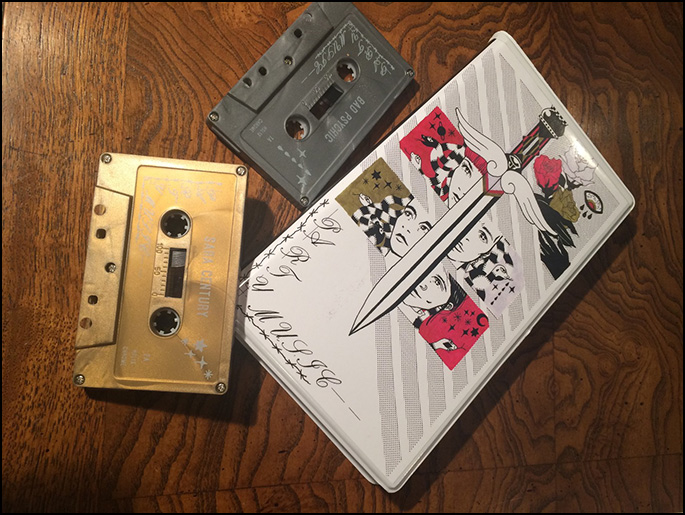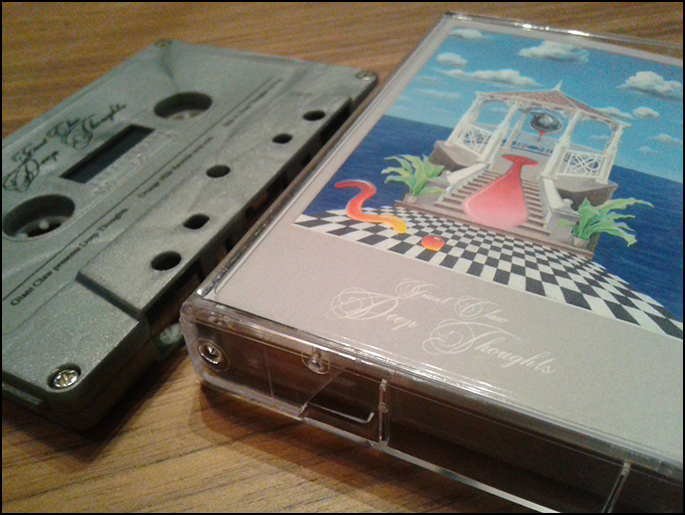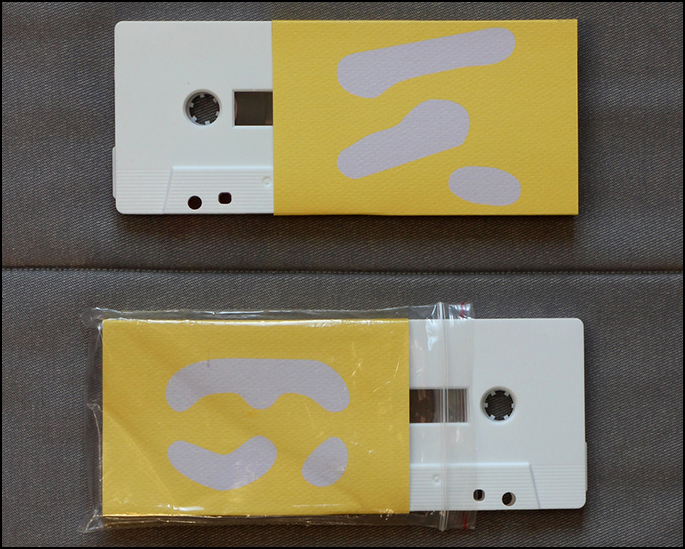Film Review – The Great American Cassette Masters
10.23.15 by Scott Scholz
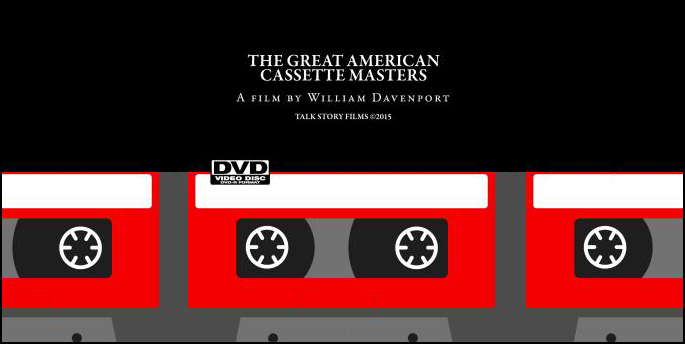
The last few years have borne lots of articles and video clips about the resurgence of cassettes and cassette culture. You’ve probably caught a whiff or two of the “official” narrative by now: cassettes were almost gone, but labels like Burger Records and Kissability have brought them back from the brink of extinction, they’re cheap and great and “gritty” and nostalgic, etc. Upon closer inspection, of course, one will find that cassette labels and cassette-centric artists have been toiling away all along, and sometimes it feels like there’s more of a resurgence in the composition of articles about a resurgence. But it’s fair to say there’s been an uptick: consider National Audio Company’s increasing production, stores like Urban Outfitters getting in on the cassette retail biz, and the appearance of Cassette Store Day, a retail-holiday whose annual repressed offerings can’t help outnumbering “cassette stores” themselves.
Pro or con, most articles about neo-cassette-culture focus on the retro technology involved with tapes, the technical and aesthetic differences between various formats, and the novelty underlying the idea of “resurgence” more generally. What they haven’t investigated in any depth is perhaps the most fundamental element behind cassette culture: community. Most Tabs Out readers and listeners are probably already down with community aspects of tapes, part of a long and humble tradition going back to the early 80s. But if we’re going to ride the waves of some “resurgence,” for better or worse, it’s pretty crucial to have some understanding of where this scene comes from. To that end, my favorite resource has long been the Cassette Mythos book of primary-source essays edited by Robin James, which was first published toward the end of the Golden Age for home-dub tape labels. If you haven’t gripped it yet, DO. Autonomedia runs reprints of it occasionally, and presently, you can pick it up direct from them right here.
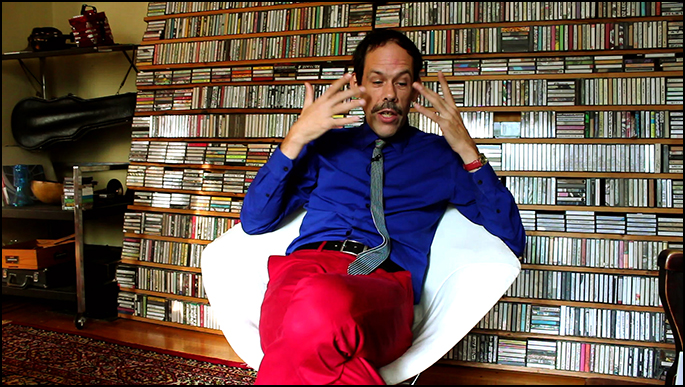
Now there is a great new resource in town: filmmaker William Davenport and Talk Story Films have just released a feature-length documentary called The Great American Cassette Masters, full of interviews and music/performance clips by folks who were there from the beginning of the cassette underground. As the former publisher/editor of Unsound, a classic early industrial and cassette networking zine active from 1983-1987, and founder of the band Problemist, Davenport is uniquely qualified to produce this documentary. This film is rich with insights from almost a dozen wonderful early cassette artists, and since most of them continue to be musically active, it also serves as a great update to the threads of activity found in Cassette Mythos.
You’ll find multiple perspectives on the relevance of experimental/noise music and its circulation in the cassette underground throughout The Great American Cassette Masters. I don’t want to get into detail about the many personal experiences and observations you’ll find throughout the film, as you should really give it a hard look and digest it all for yourself. But suffice it to say that if you’re not familiar with the work of folks like Debbie Jaffe, Randy Greif or Mike Honeycutt, you’ll leave this flick with both a sense of the collective efforts that went into 80s cassette culture and a new list of artists to dig into. I know I’m going to be catching up on Big City Orchestra, Architects Office, and Randy Grief’s music myself in the coming months. And If, Bwana and Little Fyodor?–damn. Legendary. So much good music represented here.
While the internet has obviously altered the flow of music in the cassette underground–with contemporary cassette labels, pro-dubbing has largely taken over for home-dubbing, and lots more folks like National Audio Company, Bandcamp and Paypal all take a cut of the action along with the post office–you’ll find that much of this tradition continues intact. I was struck by how many of the interview subjects consider themselves non-musicians who work in various forms of “audio collage” or “sound art,” for example. That’s certainly carried on through many artists who come to the music through fine art or graphic design backgrounds. And Hal McGee’s “four pillars” still resonate through most of the underground: “contact, community, collaboration, and compilations.”
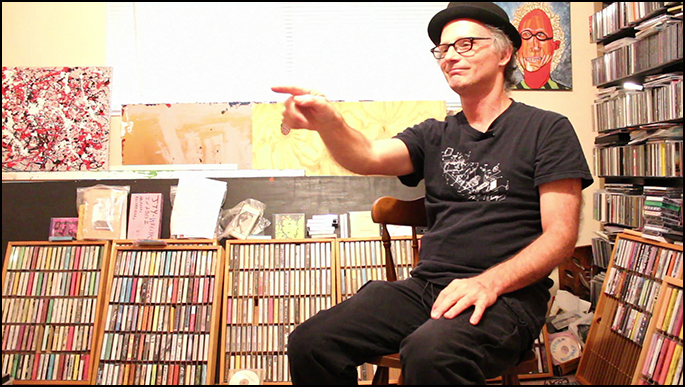
I found the continued efforts of these “cassette masters” toward nurturing community especially heartening. Most of these folks still work in music themselves, but much of their current activity collectively helps to document the past and inspire the present. Hal McGee’s recent work with HalTapes and microcassette compilations, for example, has collected excellent, very personal work from several generations under one aural roof. Don Campeau’s Living Archive of Underground Music deliciously blurs timelines into a rich continuum as well, further reinforced through his radio programming for No Pigeonholes. And Big City Orchestra has also become heavily involved in radio, including the UB Radio Salon and Radio Trouble. Encouraging newcomers while continuing to make compelling sounds, the folks interviewed throughout the film are equally fascinating as historical figures and contemporary artists.
Pick up your own DVD copy of The Great American Cassette Masters directly from Davenport’s Talk Story Films right here. Eventually it may turn up on Hulu or iTunes, but you don’t want to wait around for this. And spread the word–if this film is well received, there may be an International Cassette Masters sequel in the future, and that would be rad beyond belief. If you don’t know your history, after all, you’re doomed to tape-loop it.

